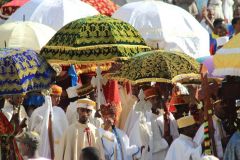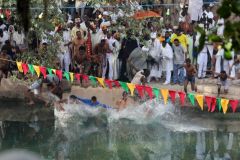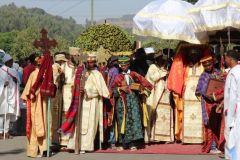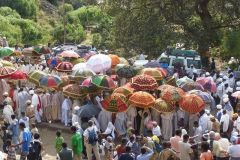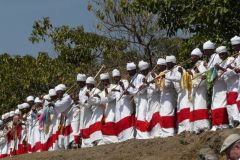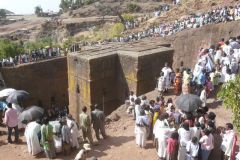Timket (Ethiopian Epiphany)
The celebration of the Timket festival or Ethiopian Epiphany is on January 19th (20th in a leap year). It commemorates the baptism of Jesus by John the Baptist in the Jordan River. This differs from the Epiphany known by the Western Christian Churches where the revelation of Jesus, the son of God, is commemorated on January 6th, symbolized by the visitation of the Three Wise Men. One of these, Balthazar, is believed to be a king from Ethiopia locally known as Bazen. His tomb is found in Axum.
Timket is the biggest celebration of the Ethiopian Orthodox Church of the year. Gondar or Lalibela having a reputation as the best place for visitors to enjoy the festival. However, Addis Ababa and Axum are also well worth visiting during Timket. And as the celebrations are everywhere you can also choose a much smaller town or village.
UNESCO inscribed Timket (Ethiopian Epiphany) in 2019 on the Representative List of the Intangible Cultural Heritage of Humanity.
The day before: Ketera

In the afternoon before the main celebrations, the festival is starting, known as Ketera. The priests are taking the Tabot (replica of the Ark of the Covenant) out of the Makdas (holy of holiest). A colorful procession leads to a water body (river, lake, pond) which is the main site of the festival. Different processions carrying the Tabots will join together along the way. Chanting and dancing crowds are following the procession.
The Tabots stay overnight near the water where the celebration and ceremonies continue during the night. In Gondar, the main festival site is the Bath of Fasilidas. In Axum at the Bath of the Queen of Sheba.
The big day: Timket
Early morning on the day of Timket everybody congregates before sunrise around the water. The performing of prayers, songs, and dances continues until the water blessing of the water. The faithful are now more than ready to renew their baptismal vows by the holy water. A run on the water will emerge.
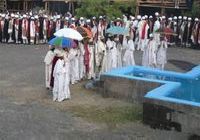
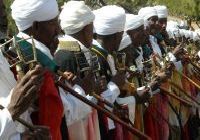
Later in the morning, the Tabots begin their journey back to the churches. It starts with a huge procession with all Tabots together and at different places, the procession halts to perform rituals. As the day before huge crowds, singing, and dancing, join the procession. It takes the better part of the day before the procession breaks up. The Tabots return to the churches mid-afternoon. Crowds will stay around the churches to celebrate Timket.
The day after: Archangel Michael
One Tabot remains at the festival site, the one consecrated in the name of archangel Mikael (Michael). The next day is one of the three big annual celebrations to commemorate the archangel. Again a colorful procession will take this Tabot back to the church. If you are traveling to your next destination this day you will certainly catch up with the celebrations somewhere.


